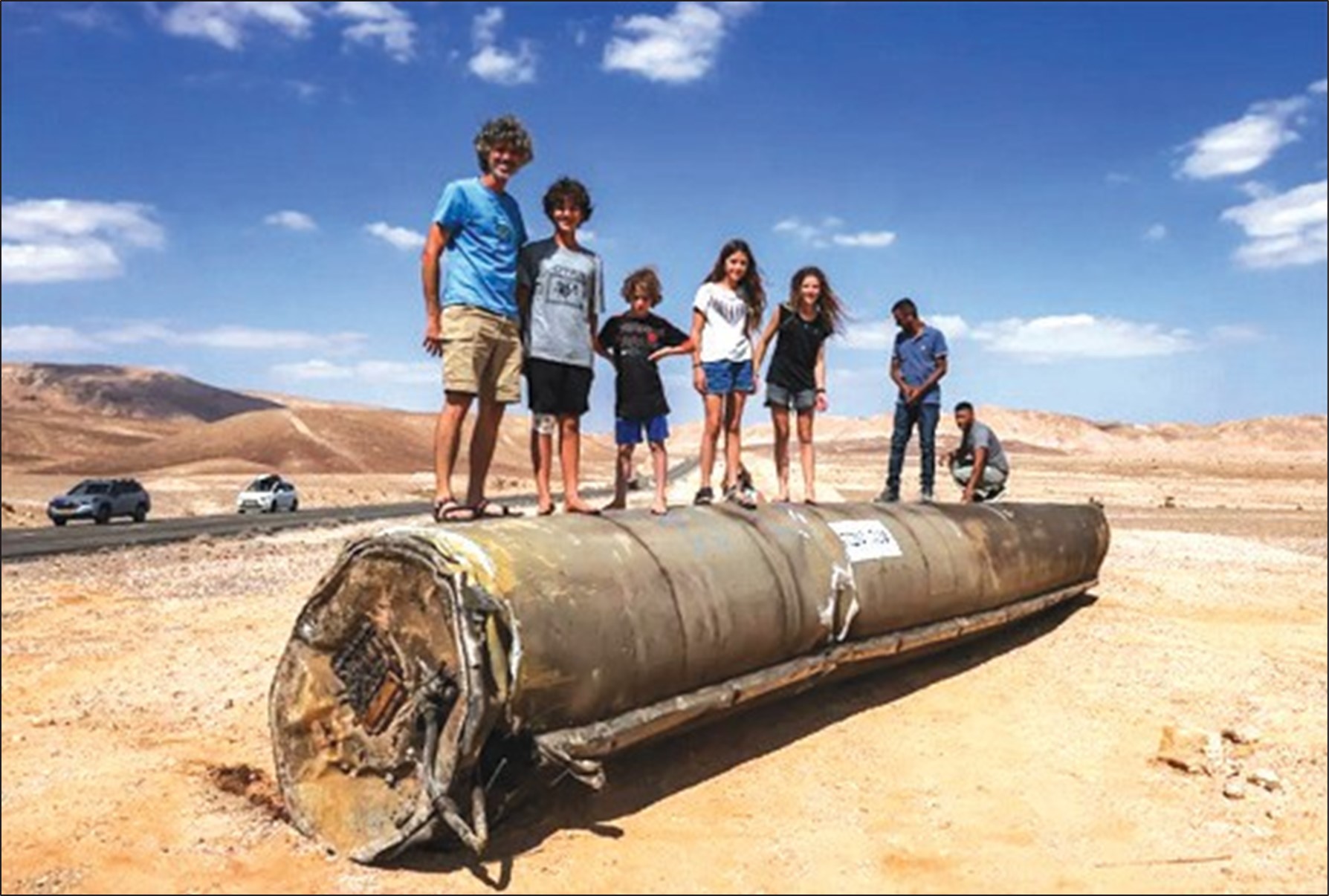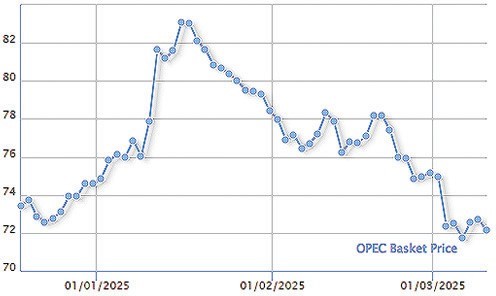October 25, 2024

The Islamic Republic has launched a second mass missile barrage at Israel and for the second time has failed to impress the world with its claimed might or precision. In this case a few more missiles have penetrated Israeli defenses, but the Iranian missiles remained very inaccurate, doing little more than digging large craters in asphalted or grassy areas and only killing a solitary man that being an Arab laborer from Gaza who was killed in the West Bank.
The October 1 barrage was an embarrassment for the Islamic Republic, just like the first barrage April 13, as the regime’s military is showing itself to be no match for Israel and no match for its rhetoric vaunting its mighty military mastery.

US National Security Adviser Jake Sullivan said, “This attack appears to have been defeated and ineffective.” The attack also showed that the Pasdaran prevailed over President Pezeshkian, who was known to have urged against any retaliation, saying it would only result in Israeli retaliation and the Israelis could damage so much Iranian infrastructure that it would knock the Iranian economy far deeper into the black hole it is already in.
Ten days after the attack, with more and more people in Iran ridiculing the regime for accomplishing nothing but to antagonize Israel, said the attack had destroyed about 20 Israeli fighter jets. That was after the Israeli Armed Forces said no planes had been damaged, let alone destroyed, and satellite photos show no damage to aircraft. Brig. Gen. Ebrahim Jabbari, an adviser to the Pasdar commander, said, “Based on the information received, it is likely that around 20 Israeli fighter jets were destroyed.

Even if the exact number is lower, the key point is that we were able to inflict heavy blows on their security, military and economic centers.” The Iranian military earlier denied it had targeted Israeli economic centers, Jabbari said hangers housing F-35 jets were among the targets of the operation. But only one building at Nevatim Air Base was seen in satellite photos to be lightly damaged.
In April, the Islamic Republic tried to overwhelm Israel’s defenses with a distraction sending scores of slow drones that were intended to occupy the attention of the Israelis who would then be caught tangled with the drones when ballistic missiles that take only minutes to reach Israel were launched. That didn’t work. None of the drones ever reached Israel. They were shot down by American, British and Jordanian planes over Jordan. So, this time the Islamic Republic tried a different tack.
It spent days making statements that implied it was withdrawing from confrontation with Israel, hoping the Israelis would relax their guard. Civilian officials, the head of the military and even Supreme Leader Ali Khamenehi spoke the new line. Khamenehi backed the “new policy” with one of his carefully crafted statements designed not to stir up hardliners: “All the forces in the resistance stand by Hezbollah.
It will be Hezbollah, at the helm of the resistance forces, that will determine the fate of the region.” However, US satellites saw Iran taking scores of missiles out of storage and preparing them for launch from multiple locations scattered around the country. Three hours before the attack was started, the White House told reporters the Iranian attack on Israel was “imminent.”
So, once again, there was no surprise and the Israeli air defense systems were ready and waiting for the Iranian barrage. There are two issues at issue in the attack. First, how many missiles evaded Israel’s dense air defense system and hit Israel. Second, what damage did those that hit Israel actually do.
The answer to the first question is that fewer than 23% of the missiles Iran launched hit Israel, far fewer than the 90% Iran claimed hit Israel. And the number that got through is probably much less than 23%. The answer to the second question is that no damage of any significance has been reported. Some craters were caused by warheads in open areas.

One hit near a school and damaged two classrooms. Another landed in the middle of a housing area and did some damage to 100 houses but didn’t directly hit any houses. Several others were scattered around an air base, but satellite photos do not show anything of significance hit. A major problem determining how many missiles got through Israel’s defenses is the fact that when Israel hits an Iranian missile, its pieces must fall to earth.
That debris may do damage. A satellite photo of an Israeli air base shows the roof of one building damaged, the largest amount of damage seen in the satellite photos. But just the roof is damaged. If the missile plunged through the roof and exploded, one would expect the walls to be blown out; but they are intact. The roof damage may just be from falling debris. Turning to the number of missiles…..
Iran said it launched 200 ballistic missiles; Israel said 181 were fired. (That compares with 120 ballistic missiles fired in April, plus 150 drones and 30 slow cruise missiles.) The difference between the Iran and Israel figures may be explained by the fact that many Iranian missiles are always duds that never get to the target. A few years ago, when Iran fired 16 missiles at a base in Iraq used by US troops, four of the missiles fell near Iraqi villages well short of the base. That was a failure rate of 25%. The difference between what Israel said and what Iran said this time would suggest a failure rate of 10% a great improvement for Iran.

The exact number of missiles that evaded Israel’s defenses is not certain. Outside of Nevatim Air Base, for which satellite photos are available but no one from the media can see damage on the ground, the total number of impact points known is seven though it is not clear how many of them were caused by intact Iranian missiles exploding and how many were caused by large debris plopping to the earth and digging a hole but not exploding. For example, a security camera showed that Sameh alAsali, 37, the Arab killed near Jericho, was crushed by the rear half of an Iranian missile falling on him after it had been knocked out by an Israeli air defense missile.
Of the seven impact sites that can be visited by reporters, one the site where the Gazan was killed was definitely debris. Four others were definitely missiles exploding. The sixth site, a restaurant in a shopping center, is unclear. The seventh was a missile that hit the city of Beersheeba with a defective warhead that did not explode.
Some of the damage shown in satellite photos of the Nevatim Air Base in the Negev desert seems so minor that there likely was no explosion and thus debris was probably the cause. But those sites cannot be visited on the ground by people outside Israel’s military. The Islamic Republic said it targeted three Israeli air bases Nevatim, Tel Nof and Hatzerim. Published satellite photos show damage at Nevatim. Satellite photos from the other two air bases are not yet available because of cloud cover.
Israel says Tel Nof was hit, but not Hatzerim. The Israel military, however, said no aircraft were damaged let alone destroyed. It said there was no damage to anything of significance and the satellite photos show no evidence of any significant damage, though a ground inspection would be required to make a definite determination. But even the number of hits at Nevatim is uncertain. Jeffrey Lewis, a professor at the Middlebury Institute of International Studies in Monterey, California, said a broad satellite photo of Nevatim shows 32 impact points by his count, though many of them are on the fringe of the air base.

It isn’t clear how many, if any, are missile strikes and how many are debris strikes. Decker Eveleth, an analyst at the Center for Naval Analyses, a federally-funded research organization based in Arlington, Virginia, also says he counted 32 impact sites but believes more were hidden by clouds and the total is probably closer to 40. But he found only one possible direct hit and “not a lot of damage.” Evan Hill of The Washington Post counted 33 craters with one apparent hit and two near misses.
The high-end estimate of 40 missiles hitting Nevatim and seven elsewhere would mean a 23% success rate at best. A missile did explode in the town of Gedera near Tel Nof Air Base where everyone was free to walk around the crater and see the damage for themselves. The missile impacted a paved area just in front of a school. Major damage to two classrooms could be seen. But the building remains intact. (The attack was launched at night so no students were in the school.) A shopping mall at Ramat Gan also reported being hit.
Journalists took many pictures of a restaurant clearing up broken glass. But no photos showed an impact crater, suggesting the restaurant likely was hit by falling debris. The Islamic Republic said that in addition to the three air bases it had targeted the headquarters of Mossad, Israel’s foreign intelligence service, near Tel Aviv. Iran boasted that it had “totally destroyed” the headquarters. But, again, anyone was free to walk around the exterior of the building and see that it was untouched. However, two missiles bracketed the headquarters.

Yet neither so much as broke a window in the building. One landed roughly a kilometer north of the building and the other landed roughly a kilometer south of it. One put a huge crater in a parking lot and the other put an equally large crater in a grassy area beside a highway. The craters were wide and deep, indicating that these were indeed warheads exploding. They were missiles that got passed the Israeli defenses, but had little accuracy. A BBC correspondent filmed several badly damaged cars and a pile of earth next to the road where one missile impact created a crater between 8 meters and 10 meters (25 to 33 feet) deep.
The nearby municipality of Hod HaSharon also said about 100 houses were damaged by a missile explosion and shrapnel. That was a large number of houses, but most of them suffered only light damage like windows being blown out and a few houses were reported uninhabitable. Several shells of missiles struck by Israeli defenses were found littering the landscape. It has become something of a thing for Israelis to take photos of themselves and their kids standing on the missile shells.

Assuming all the impacts at Nevatim and the shopping mall were from debris, the only known missiles that actually got through Israel’s defenses number five the two that bracketed the Mossad HQ, the one that hit near the school, the dud that hit Beersheeba and the one that damaged the housing area. Five out of the 200 missiles fired as claimed by the Islamic Republic would mean a success rate of 2- 1/2%, considerably short of the 90% success rate claimed by Iranian Defense Minister Brig. Gen. Aziz Nasirzadeh. Israel’s Magen David Adom ambulance service said paramedics treated two people with light injuries from shrapnel in the Tel Aviv area, as well as some people with minor injuries caused by falling as they ran to shelters.
When Iran launched the missiles which take less than 15 minutes to reach Israel the Israeli authorities sounded air raid sirens all across the country and sent warning messages to every cellphone in the country ordering all 10 million Israelis into shelters. As a result, there were few Israelis above ground when the missiles impacted. In a half hour, the all-clear was sounded and everyone went back to what they were doing. The missiles landed about 7:30 p.m. Israel time, so many people were at home.
Israel has a three-layered system of air defenses, the bestknown of which is the Iron Dome. It is designed to intercept short-range rockets of the sort fired by Hamas and Hezbollah. While it was used to defend against some elements of Iran’s last attack in April, other layers probably did the bulk of the work October 1. David’s Sling a joint USIsraeli manufactured system is used to intercept medium to longrange rockets, as well as ballistic and cruise missiles.

And when it comes to long-range ballistic missiles, which fly outside the Earth’s atmosphere, Israel has the Arrow 2 and Arrow 3 interceptors. Iranian President Masud Pezeshkian dismissed the Israeli defenses, saying they proved to be “as fragile as glass.” The Pentagon said two of three US Navy destroyers deployed in the Eastern Mediterranean fired 12 Standard missiles as part of the efforts to defend Israel, but that it was not known whether they took down any of the Iranian missiles.
UK Defense Secretary John Healey said British forces had “played their part in attempts to prevent further escalation.” But the BBC understands that British military jets did not shoot down any Iranian missiles. Verified footage also showed missile debris around the Jordanian capital, Amman though those missiles were probably hit by Israel’s anti-missile defenses rather than Jordan. The Arab kingdom’s forces shot down a number of drones during Iran’s attack in April.
The Pasdar announcement that it had fired the barrage said it was done to retaliate for three assassinations carried out by Israel the murder in Tehran on July 30 of Esmail Haniyeh, the Palestinian head of Hamas; the killing in Beirut September 27 of Hassan Nasrollah, the Lebanese head of Hezbollah; and the death in the same attack in Beirut of Brig. Gen. Abbas Nil-forushan, the Pasdar general who coordinated Iranian military activities with Hezbollah.
GOP presidential candidate Donald Trump, however, blamed the attack on the foreign policy of President Biden and Vice President Kamala Harris., saying, “The so-called enemy doesn’t respect our country anymore,” adding, “if I were president, it would not have happened.” He also said, “The two incompetent people running our country and I don’t think they’re even running it are leading us to the brink of World War III, a war like no other.”
Many people have been raising the specter of World War III, but any war between Iran and Israel is likely to be confined to missiles, since the two countries are more than a thousand kilometers from one another, and both would need a huge fleet of buses just to get ground troops across Jordan and Iraq to face one another. The Islamic Republic said it used three types of missiles in the October 1 barrage Qadr and Emad, which were also used in April, and the brand-new Fattah1.
Iran claims Fattah is a hypersonic missile able to fly 15 times the speed of sound or far faster than any American missiles. It is also claimed to have a maneuverable warhead that can jig and jog so as to avoid Israeli defensive missiles. There is much debate as to whether the Fattah has either of those capabilities. The largest warhead on any of these missiles is believed to be 750 kilos (1,650 pounds) large, but not large enough if the missile misses the target by a kilometer. Former Iranian Interior Minister Ahmad Vahidi said Iran has the power to “level” Israeli cities if it should choose to do so. “We could have razed Tel Aviv and Haifa to the ground, but we refrained from doing so out of humanitarian considerations,” he said.
“However, if the [Israeli] regime makes a mistake, we will level Tel Aviv in just one night.” But the October 1 barrage shows the exact opposite. Iran’s short-range missiles are quite accurate. But the ones that can reach Israel are not at all accurate. Furthermore, the largest payload of any Iranian missile is less than a ton.
For Iran to hit Israel with as much tonnage as the allies dropped on Germany in World War II would require Iran to have almost a million missiles; CENTCOM said in 2023 that Iran had more than 3,000 missiles (of all ranges, mostly without the range to reach Israel). The Islamic Republic canceled all flights from all airports in the country for 12 hours after launching its missile barrage.
It clearly did not want to risk another incident like the one five years ago after Iran fired a barrage of missiles at a base in Iraq used by the Americans. That night a nervous air defense officer thought he detected an incoming American Tomahawk missile and shot down a Ukrainian passenger plane, killing all on board.

























